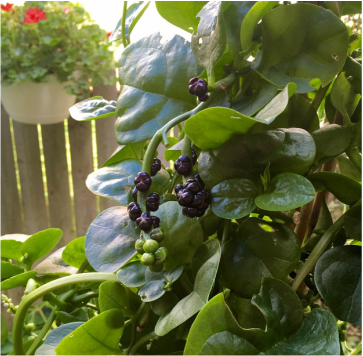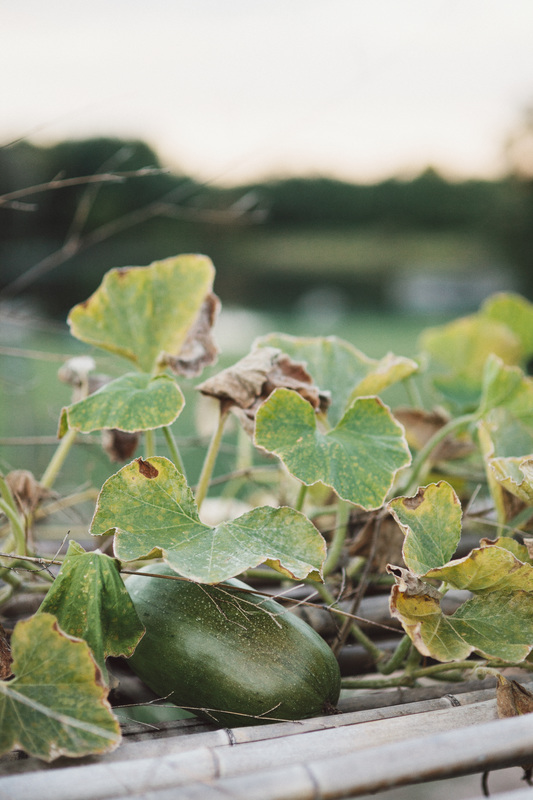 Malabar spinach is a great heat-loving vining spinach that does really well in a container as you see in the photo here of my friend Grace's plant. Towards the end of the summer, you’ll see pretty pink round flowers that turn into dark blue/black berries. These berries are mostly tasteless but have historically been used as a bright pink/red dye for products like fabric and paper. The berries can also be used as an edible food dye. To save seed, wait until the berries are nearly dry (but before they drop all over your garden) and pull the berries off. Let them fully dry on a screen or a shallow bowl. When the berries fully dry, seeds will be easy to remove or sift and save. Malabar spinach plants do produce a lot of seeds and some people have complained of rampant re-seeding. My father allows his Malabar spinach to ramble in rows in the garden, but removes the plants shortly after they produce berries and before seeds dry and fall. He has never had a problem with unwanted reseeding.
0 Comments
I won't wax poetically about heirloom seeds - mostly because some people can do it so much more passionately and expertly than I can, but in short, heirloom seeds - and the gardeners that preserve them - are quite amazing.
This is a gigantic Chinese jade squash, sitting on top of a trellis in my father's garden. It has a while to go before it lightens in color and develops lovely green speckles/streaks. He's grown this squash for the past few years and loves the tender, mild taste. Later, he'll grate the pale yellow flesh and make fried squash patties or may finely chop the squash and combine it with minced shrimp and ground pork to make his famous dumplings. Prior to these past few years though, my father had not tasted this squash since probably the early 1960's. Shortly after that time, my father made his way from rural China to bustling Hong Kong, then finally to the suburbs of the United States where he cultivated several different gardens in the backyards of several different homes. He tried for the first time, and then subsequently grew many vegetables that a typical American gardener would grow such as tomatoes, cucumbers and summer squash. While my father was gardening in the United States, gardeners in Shandong, China, remained guardians of this very local heirloom squash, growing them season after season, saving seeds season after season so that one day, decades later, my father would meet an old friend with a handful of seeds to share. These seeds were saved from my father's favorite squash grown back home during his childhood decades ago. While my father may now be accustomed to tasting Chinese jade squash every fall since he's been saving seeds for a few years now, I am amazed every time I see this gorgeous thing up on the trellis from a very far off place and time. |
AuthorI'm Wendy Kiang-Spray, gardener, home cook, and author of The Chinese Kitchen Garden. Learn more about the book here. Enjoy the blog and be sure to like The Chinese Kitchen Garden Facebook page for notifications when there are new posts. Archives
April 2019
Categories
All
|

 RSS Feed
RSS Feed